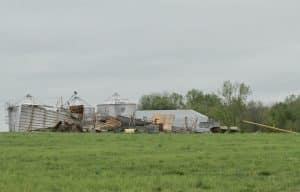Managing tomato diseases in Illinois
By PHYLLIS COULTER
FarmWeek
Tomatoes are growing in popularity as a crop in Illinois.
“It’s becoming a tomato state,” said University of Illinois Professor Mohammed Babadoost.
While Illinois is known as being the No. 1 state for soybean, pumpkin and horseradish production, few people know tomatoes are such a big crop in Illinois. Tomato production in Illinois is greater than apples or peaches, Babadoost said.
With that in mind, the plant pathologist recently discussed common tomato diseases at the Stateline Fruit and Vegetable Growers Conference at Northern Illinois University in Rockford.
Some tomato diseases were more prevalent last year than in the past.
“It was a little surprising,” Babadoost said of the higher incidence of septoria leaf spot in 2024. “For 10 years, we haven’t had any because it is easy to control.”
Two other fungal diseases, early blight and anthracnose, are also significant diseases in Illinois tomato fields. All three can be sprayed with Quadris alternated with chlorothalonil (Bravo Weather Stik) to effectively control these diseases, he said. Anthracnose is more commonly seen on ripened tomatoes if harvest is not timely.
As for tomatoes grown in high tunnels, leaf mold can be a problem. It is caused when there is water on the plants or high relative humidity but can be controlled when growers open the side of the high tunnels to lower humidity, so it is no longer a serious problem, Babadoost said.
Verticillium wilt was a serious problem for growers with indoor production in Southern Illinois last year. It was notable late in the season. Because the pathogen starts in the soil, growing plants in big pots may help. Grafting susceptible scion onto resistant roots, or steam treating the ground and crop rotation are options to control the disease.
Babadoost said he saw only one case of root-knot nematode in a high tunnel last year. He’s not sure if nematicides will help or if grafted tomatoes or steam treatment could be effective in the future. More study is needed.
For three years, Babadoost has studied bacterial spot in tomatoes monitoring fields in south, central and northern Illinois. His team studied 12 cultivars and didn’t find any that were resistant to the disease.
To manage both bacterial speck and bacterial spot, commonly found in tomatoes in Illinois, growers should choose only pathogen-free seed, or certified disease-free transplants, follow a crop rotation with non-host plants and use effective weed control. Spraying can also manage bacterial spot with Kocide-3000, Manzate PRO Stick and Regalia become effective compounds.
Recommended sprays include Kocide-300 and Manzate PRO Stick, except during harvest. Kocide-3000 and Bravo Weather Stik can be alternated with Regalia and Kocide-3000 during harvest.
This story was distributed through a cooperative project between the Illinois Farm Bureau and Illinois Press Association. For more food and farming news, visit FarmWeekNow.com.






